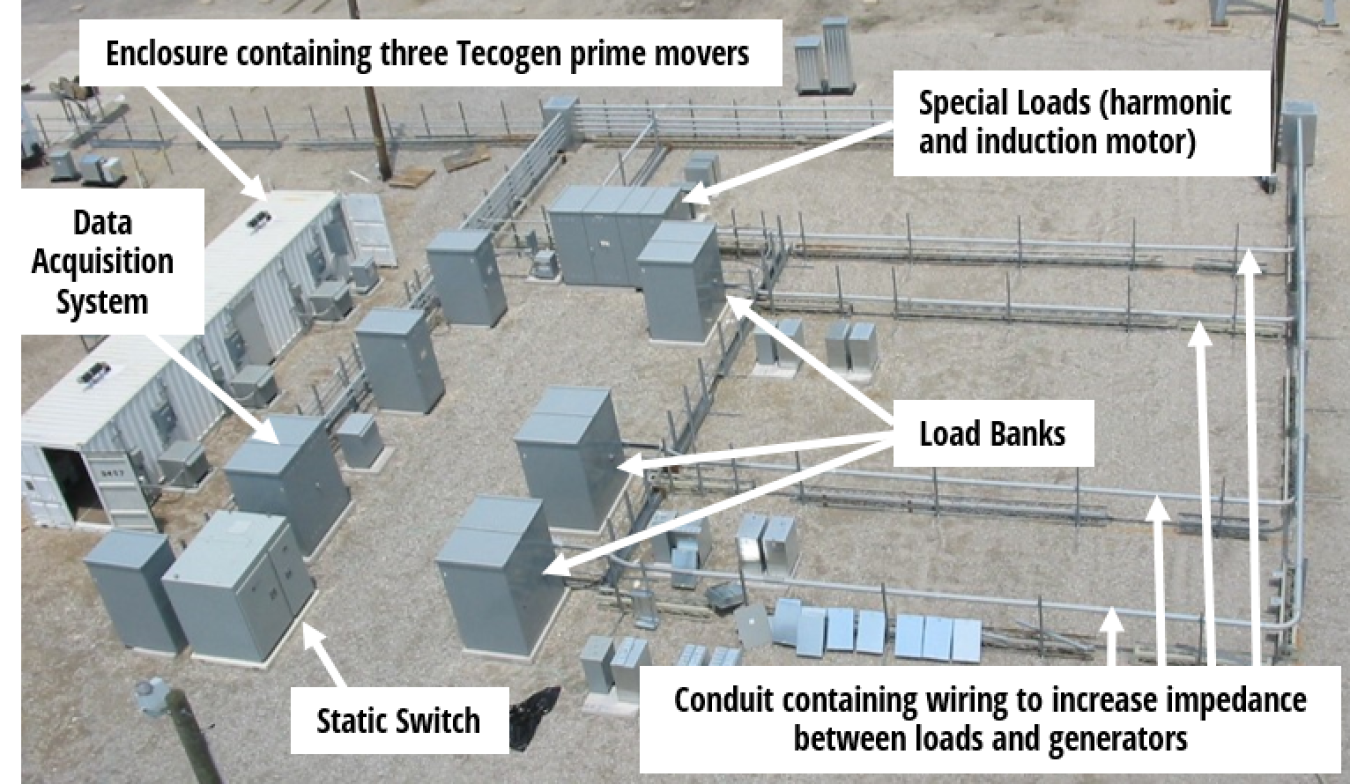Demonstrating the Benefits of Autonomous, Decentralized Control of Microgrids
September 28, 2018The Office of Electricity (OE) leads the Department’s efforts to ensure the nation’s critical energy infrastructure is secure and able to recover rapidly from disruptions. Microgrids – localized grids that can disconnect from the traditional grid to operate autonomously – have emerged as a promising means of increasing grid reliability and resilience. One of the key challenges in the widespread adoption of microgrids is the ability to operate multiple interconnected distributed energy resources when challenging operating conditions such as sudden load and generation imbalances arise.
The Consortium for Electric Reliability Technology Solutions (CERTS), an OE-funded collaboration among several National Laboratories, universities, and industry partners, has addressed these challenges by developing a set of advanced microgrid control and integration techniques known as the CERTS Microgrid Concept. A new report recently released by Lawrence Berkeley National Laboratory – The CERTS Microgrid Concept as Demonstrated at the CERTS/AEP Microgrid Test Bed – discusses how these techniques were validated at a full-scale microgrid demonstration test bed operated by American Electric Power (AEP), the largest electric utility in the Midwestern United States. The testing was conducted in partnership with OE and the California Energy Commission.

A key feature of a microgrid is the ability to separate and isolate itself from the utility during a disturbance with little or no disruption. When the utility grid returns to normal, the microgrid then automatically resynchronizes and reconnects itself to the grid. With the CERTS Microgrid Concept, the microgrid is able to operate using decentralized, autonomous control which allows each of the active elements within a microgrid to operate in coordination with one another through information that is available locally. This approach eliminates the need for a component such as a master controller or a central storage unit for operation of the microgrid. Thus, a CERTS Microgrid can continue operating with the loss of an individual component, generator, or their communication links. This approach also lowers the total cost of a microgrid because of the reduction of site-specific costs of commissioning and maintaining grid-independent operations. For smaller microgrids, which consist of individual sources ranging in size from tens to hundreds of kilowatts (kW) and totaling 5 to 20 megawatts (MW) in aggregate installed generating capacity, these costs are significant. Therefore, lowering these costs greatly improves the economics of smaller-scale microgrids. The entire report is available HERE for downloading.
To learn more about how microgrids are helping to advance the Nation’s energy system, visit the microgrids section of the OE website.
Dan Ton

Dan Ton is Program Manager at the U.S. Department of Energy (DOE) Office of Electricity (OE), responsible for developing and managing the OE Microgrids R&D Program. He also serves as the OE lead for the Community Microgrid Assistance Partnership (C-MAP) program.
From May 2014 until July 2015, he served as Acting Deputy Assistant Secretary of OE’s Power Systems Engineering Division. Before joining OE, Dan managed the Renewable Systems Integration program within the DOE Solar Energy Technologies Program.
Dan holds a Bachelor of Science in Electrical Engineering and a Master of Science in Business Management, both from the University of Maryland.


